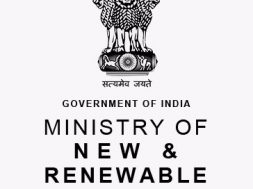
In Short : Their energy transition remains incomplete, particularly in retrofitting existing systems with cleaner alternatives. These nations must take urgent action to meet their ambitious goals of reducing emissions by 50% by 2030 and achieving net-zero by 2050
In Detail : By embracing differentiated energy transition roadmaps, every nation, no matter where it is on its development journey, can move towards a sustainable future
As the world grapples with the climate challenge, the urgency for a nuanced approach to energy transition has never been greater. Yet, economies are constrained by their varying stages of development and the disproportionate distribution of energy access, climate risks, and financial resources. While clean energy investments are set to exceed $2 trillion in 2024, political uncertainties and inadequate infrastructure continue to stall progress, leading to slowing of global climate action in the recent past. Disparities in energy access, electricity consumption patterns, climate risks, carbon emissions, financial flows, and resource availability further complicate this journey. Despite the growing cost-effectiveness of renewable energy, particularly in solar and wind-rich regions, overreliance on subsidies and poor infrastructure planning impede progress.
To address these challenges, it is crucial to develop tailored, people-centric energy transition roadmaps based on four distinct archetypes: High-income countries, emerging economies, low-income countries, and small island developing states (SIDS). Progress can be measured by comparing the cost of round the clock renewable energy (RTC RE) to fossil fuels, providing a clear benchmark for sustainable development.
High-income countries, despite their advanced economies, are responsible for over 60% of global emissions. Spearheading global decarbonisation will require significant investments in transition finance, energy storage technologies and fortifying global value chains through results-based carbon financing.
Emerging economies are experiencing rapid growth in energy consumption, presenting opportunities for local manufacturing, job creation, and scaling renewable energy. In India, for example, the cost of RTC RE is projected to drop below ₹2 (~$0.02) per kWh, driven by falling technology costs and supportive government policies. However, these countries face significant climate risks, with 91% of climate-related fatalities occurring here. A threefold increase in renewable capacity will be imperative. The challenge lies in attracting private financing, as these regions grapple with higher risk perceptions.
Low-income countries (LICs) face steeper challenges. Despite immense solar potential, less than 50% of their populations have access to electricity. The financial need is immense — around $400 billion to finance their solar energy journey — yet they receive only a fraction of this amount. High debt costs ranging from 20-30% and the absence of a domestic renewable energy supply chain, stifle progress. Extensive financial and policy support, including enhanced access to climate finance and innovative mechanisms like blended finance, is crucial for these countries to advance.
SIDS are confronting an existential crisis. Heavily reliant on imported fossil fuels, they face exorbitant electricity costs. Although solar energy presents a viable solution, the development costs in these regions are three times the global average per GW. Geographical constraints and grid inaccessibility further complicate their transition to renewable energy. SIDS need tailored solutions, such as floating solar, solar-powered transportation solutions, advanced storage systems, and increased access to low-cost finance, to transition effectively.
Given such divergent realities, energy transitions are unfolding in vastly different ways across the globe. Focusing solely on global renewables growth rates can be misleading, as there isn’t a single, unified energy transition but rather a series of regional transitions that vary widely in form, pace, and scope. This highlights the importance of recognising and addressing the energy landscapes of each region, rather than relying on global averages that can mask the true state of the energy transition in different parts of the world.
A profound and systemic transformation of the global energy system is no longer optional; it is a necessity. The cost comparison between RTC RE and fossil fuels across different archetypes is a critical factor in crafting effective, archetype-specific energy transition plans. In some cases, renewable energy costs have already become competitive with or even lower than that of fossil fuels. In others, success hinges on developing conducive business models and implementing enabling policies.
This transformation must extend beyond the decarbonisation of energy supply and consumption; it must also lay the foundation for a resilient and inclusive global economy. This requires a strategic shift towards systems that support a renewable-dominated energy landscape. Governments must actively dismantle physical, policy, and institutional barriers, enhance access to climate finance, and prioritise the development of local renewable ecosystems.
In the Global South, the focus should be on skilling and capacity-building to ensure full participation in the global energy transition. An archetypal approach that recognises the unique challenges and opportunities of different regions can unlock the potential for scaling solar power and generating jobs, particularly in emerging markets. Governments play a pivotal role in overcoming inefficiencies and ensuring that the benefits of the energy transition are shared across all sectors of society.
Government efforts in low-income countries and SIDS must be bolstered by international support. The growing disparity in transition financing between advanced and developing economies necessitates increased global cooperation and innovative approaches to unlock investments. Tailoring support to the specific needs of each archetype will be crucial in ensuring that every nation can progress toward a sustainable future. The International Solar Alliance’s recent analysis underscores the significance of an archetypal approach to energy transition, recognising the distinct needs of different regions. This not only facilitates the spread of renewable energy but also drives profound social impacts, such as job creation, gender equality, and youth engagement.














